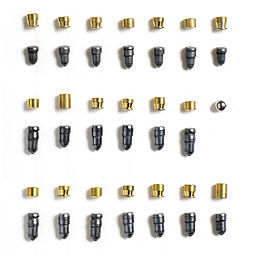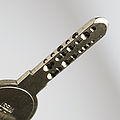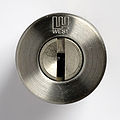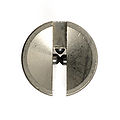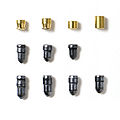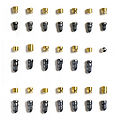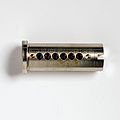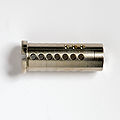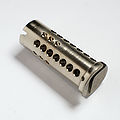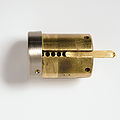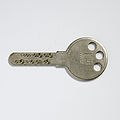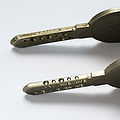WEST 917: Difference between revisions
m (→{{PAGENAME}}: Page title / TOC fix) |
m (add disassembly instructions) |
||
| Line 41: | Line 41: | ||
| Side row pins || 4.6 || 5.0 || 5.4 || 5.8 | | Side row pins || 4.6 || 5.0 || 5.4 || 5.8 | ||
|} | |} | ||
== Disassembly instructions == | |||
The WEST 917 is disassembled in the same way as a traditional pin-tumbler cylinder. | |||
# Remove the rear plate | |||
# Insert the key and turn the [[plug]] 30-45 degrees. | |||
# Withdraw the plug from the cylinder. (A [[plug follower]] and [[core shims]] are strongly recommended) | |||
:''Note: the three bible covers of the cylinder can be removed easily and non-destructively.'' | |||
:''This makes gutting and re-pinning possible without removing the plug.'' | |||
<br clear="all"> | <br clear="all"> | ||
Revision as of 18:58, 9 December 2022
WEST 917
| WEST 917 | |
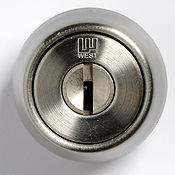 | |
| Name | WEST 917 |
|---|---|
| Manufacturer | WEST |
| Lock Type | Cylinder |
| Lock Design | Pin-tumbler, Dimple |
| Specifications | |
| # of Components | 20 |
| Component Type | Pin-tumbler |
| Related Locks | |
| WEST 916 | |
The 917 is a dimple lock made by the Japanese company WEST. It contains 20 pins, arranged in rows of seven on the left and the top of the keyway as well as six on the right.
Please note: the 917 is very similar to the smaller, 12-pin WEST 916 model. The two locks share the same pins, fundamental designs, and primary security features.
Principles of operation
The WEST 917 operates with dimple keys but functions the same as a standard pin-tumbler lock. The lock uses 20 chambers for pin-tumbler stacks. There are seven stacks in the top and left side rows as well as six stacks on the right side. Each of those chambers contains a set of key pin, driver, and spring. A seventh chamber on the right side of the bible contains a sprung bearing that aligns with an indent in the core to center-bias it.
The dimple key of the 917 has four cut depths for side pins and three, different cut depths for pins in the top row. The key is bitted on the sides and edges of the blade and is reversible. To open the lock, all 20 pin-tumblers -- across all three rows of pins -- must be aligned at the shear line. (See also Pin-tumbler, Principles of Operation)
WEST utilizes a variety of security pins to deter picking. Pin stacks incorporate stainless steel key pins with two sizes of brass driver pins to match. The 917 uses a mix of mushroom spool drivers and standard ones. Drivers are cupped to allow the spring to nest inside the pins. Key pins are a combination of t-pins and multi-section tapered spools which are torpedo shaped to create overset traps. These pin designs match over- and/or counter-milling of the pin chambers in the core to catch pins as they are lifted to shear.
| West 917 pin sizes (mm) | ||||
|---|---|---|---|---|
| Top row pins | 4.0 | 4.4 | 4.8 | |
| Side row pins | 4.6 | 5.0 | 5.4 | 5.8 |
Disassembly instructions
The WEST 917 is disassembled in the same way as a traditional pin-tumbler cylinder.
- Remove the rear plate
- Insert the key and turn the plug 30-45 degrees.
- Withdraw the plug from the cylinder. (A plug follower and core shims are strongly recommended)
- Note: the three bible covers of the cylinder can be removed easily and non-destructively.
- This makes gutting and re-pinning possible without removing the plug.
Gallery
See also
| This article is a stub. You can help Lockwiki by expanding it. |
